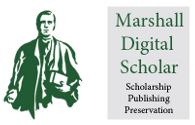Abstract
Following the publication of Timothie Bright’s Characterie: An Art of shorte, swifte and secrete writing by Character in 1588, a spate of books on shorthand appeared in England. This technology echoed long-forgotten methods which had developed centuries before, while providing fresh techniques for composing and recording spoken speech. From their very beginnings these new systems proved especially applicable to religious purposes, though they also found academic, legal, and governmental applications. Clergy from those centuries left hundreds of “short-writing” manuscripts which are as yet untranscribed.
This article describes the principles behind “short-writing” as exemplified in two major systems in use in the era under consideration: John Willis’ cipher system (The Art of Stenography, 1602) and Thomas Shelton’s code system (Short-Writing, the Most Exact Method, 1626). It considers some of the challenges in transcribing extant notes into English, and pays special attention to two previously unreadable coded systems the author has solved: the 18th century MSS of the Rev. Adonijah Bidwell of Monterey, MA (1716-1784), and the 17th century idiosyncratic notes of a lay notetaker, John Pynchon of Springfield, MA (1625?-1703).
First Page
1
Last Page
14
Creative Commons License

This work is licensed under a Creative Commons Attribution-NonCommercial-No Derivative Works 4.0 International License.
Recommended Citation
Powers, David. "“Fortunate Art”: Short-Writing and Two of Its Practitioners in Colonial New England." Sermon Studies 5.1 (2021) : 1-14. https://mds.marshall.edu/sermonstudies/vol5/iss1/1

